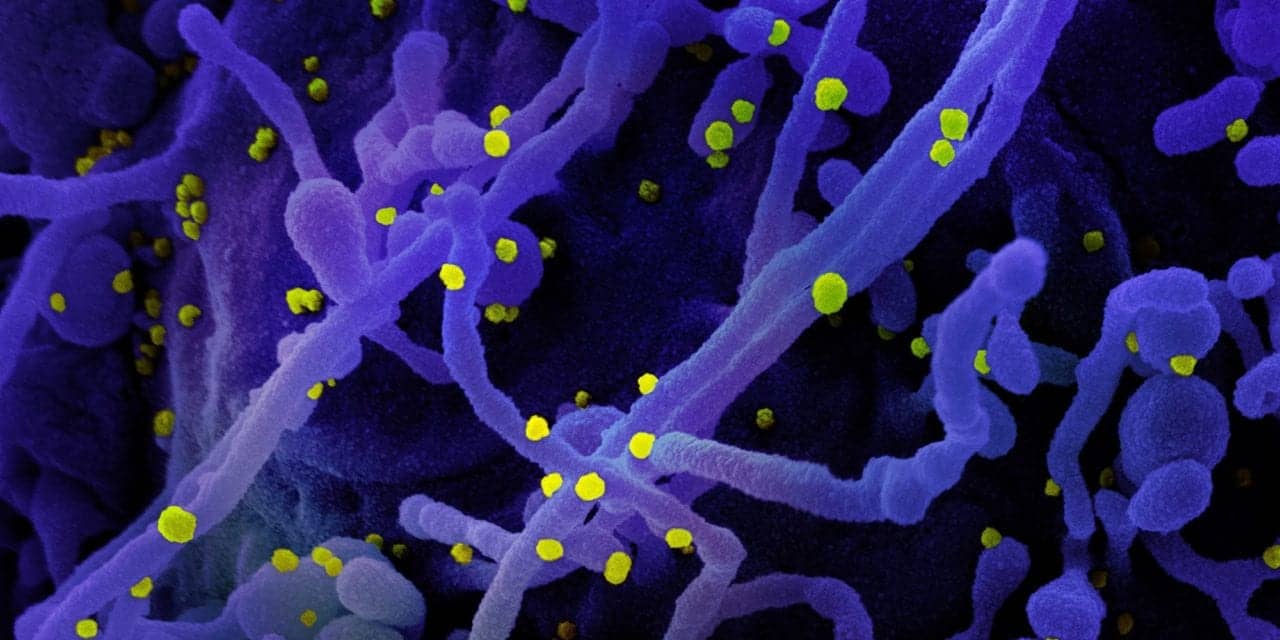Inhaled nitric oxide (iNO) has been used to treat pulmonary hypertension and acute respiratory distress syndrome for decades. Now, research is emerging on positive outcomes for critical care COVID-19 patients who have been treated with iNO.
By Lisa Spear
A molecule that is naturally produced by many cells throughout the human body, nitric oxide is used as an inhaled gas in critical care settings for newborns and some adults who are experiencing hypoxia. The colorless gas relaxes the endothelial cells that line the inside of blood vessels and improves oxygen saturation. This substance also has potential antiviral properties, which could theoretically help battle COVID-19.1
Multiple ongoing clinical trials are now looking at inhaled nitric oxide (iNO) as a treatment for COVID-19 and this substance is already being used with promising results in this patient population. In March, the US FDA gave a handful of pharmaceutical companies emergency clearance to allow use of their nitric oxide devices to treat these patients, including Bellerophon Therapeutics and Vero Biotech. And scientists across the country are actively recruiting subjects for studies to confirm that this inhaled gas can have therapeutic benefits in COVID-19 patients by preventing further damage to the vessels inside the lungs.
“When the virus causes pneumonia, it appears to attack vasculature, among other things,” said Nicholas Hill, MD, a critical care physician at Tufts Medical Center in Boston and one of the many researchers looking at iNO as a treatment for COVID-19. “Our hypothesis is because of its favorable effects on blood vessels, it will help ameliorate the injury caused by the virus.”
Hill, who serves as chief of the Tuft’s Division of Pulmonary, Critical Care and Sleep, and his colleagues are still recruiting subjects, but he has already been using iNO in his patients with favorable results with the INOpulse system, a lightweight and portable delivery device from Bellerophon Therapeutics.
“Three COVID-19 patients that completed INOpulse treatment to date have already demonstrated improved oxygenation that allowed them to avoid the need for mechanical ventilation and two of the patients have already been discharged,” said Hunter Gillies, MD, chief medical officer at Bellerophon Therapeutics.
Previous studies during the SARS outbreak demonstrated that nitric oxide was effective in inhibiting the replication cycle of SARS CoV,1 which is genetically similar to COVID-19. Massachusetts General Hospital reports that preliminary data suggests that inhaled nitric oxide could have an anti-viral effect on COVID-19, due to these genomic similarities. Nitric oxide decreases the tone in blood vessels and keeps pressure in the vasculature low. Scientists only began studying it for its therapeutic potential on the cardiovascular and nervous system within the last 50 years, and ultimately discovered its benefits in the ’80s. The journal Science then named nitric oxide “Molecule of the Year” in 1992, and six years later the researchers responsible for the major discoveries surrounding nitric oxide won a Nobel Prize for physiology and medicine.2
“It’s really been a game-changer in clinical care,” said Michael Gentile, RRT, vice president of medical affairs at Vero Biotech in Atlanta, Georgia. “It is really quite a miraculous thing for patients, families and clinicians over the last 20 years.”
Clinicians have since used iNO primarily in neonatal intensive care units to treat conditions, including persistent pulmonary hypertension of newborns, approved by FDA for this purpose. Clinicians have found it helpful in keeping neonates off of extracorporeal membrane oxygenation (ECMO). However, it is also deployed off-label to treat adults for various pulmonary conditions, said Hill, professor of medicine at Tufts University School of Medicine. “It is very safe to use, as long as the dose is right. People have very few side effects,” said Hill.
Hill and colleagues are now recruiting COVID-19 pneumonia patients for a double-blind study on nitric oxide using the INOpulse system, which automatically adjusts to the patient’s breathing for consistent drug delivery into the airways. “Our thought is that if we use nitric oxide early we may be able to prevent the progression,” said Hill.
One of the unusual features of some COVID-19 patients is that people come in with silent hypoxia. These people have low blood oxygen levels in the 80s or even in the 70s, but they show no signs of being short of breath. This unusual occurrence might be due to damage to the endothelial blood vessel lining in the lungs, leading them to not produce an adequate amount of nitric oxide naturally. In healthy vessels, the endothelium releases nitric oxide. A hallmark of endothelial dysfunction is suppressed endothelial nitric oxide synthase and deficiency, which can contribute to hypertension and thrombus formation. With early intervention in moderate COVID-19 cases, Hill said, iNO may be able help prevent further damage and restore the health of the vessels.
“There’s been a lot of reports of patients who aren’t in distress, but they have life-threatening hypoxemia and that’s where nitric oxide fits in,” said Gentile.
The Tufts pilot study will enroll 42 patients, who will be randomized. Two thirds of the patients will receive nitric oxide and the rest will be given a placebo. The primary outcome variable will be a reduction in the severity of hypoxia and the avoidance of intubation and subsequent complications. The researchers will use the INOpulse delivery system, which is about the size of a tissue box, and weighs only a few pounds. The device works with a canister that is screwed into the device to deliver the drug. Depending on the dose, each canister can keep the system running for a few days at a time.
Another iNO delivery system, Vero Biotech’s Genosyl DS, is a tankless system that produces on-demand nitric oxide via a chemical reaction. To ensure safety, sensors continuously monitor nitric oxide, NO2 and O2 levels. “Application of Vero’s tankless inhaled nitric oxide system at home under physician supervision is particularly critical during a time of crisis when hospital beds and ventilators are in short supply,” said Brent Furse, president and CEO of Vero Biotech, in a statement.
According to the company, Genosyl is indicated to improve oxygenation and reduce the need for extracorporeal membrane oxygenation in neonates with hypoxic respiratory failure associated with pulmonary hypertension. Now, it may also benefit home-based use of inhaled nitric oxide to treat COVID-19 patients who develop PH. “In this time of a global pandemic and public health crisis, it is critical to explore all potential options for treating both the novel coronavirus and its associated cardiopulmonary conditions,” said Furse.
RT
Lisa Spear is associate editor of RT. For more information, contact [email protected].
References
- Åkerström S, Mousavi-Jazi M, Et al. Nitric oxide inhibits the replication cycle of severe acute respiratory syndrome coronavirus. J Virol. 2005 Feb. 79(3): 1966-1969.
- Stamler JS, Singel DJ, Loscalzo J. Biochemistry of nitric oxide and its redox-activated forms. Science. 1992;258:1898–902.
- Green S. Covid-19 accelerates endothelial dysfunction and nitric oxide deficiency. Microbes Infect. 2020 May. 22(4): 149-150.









